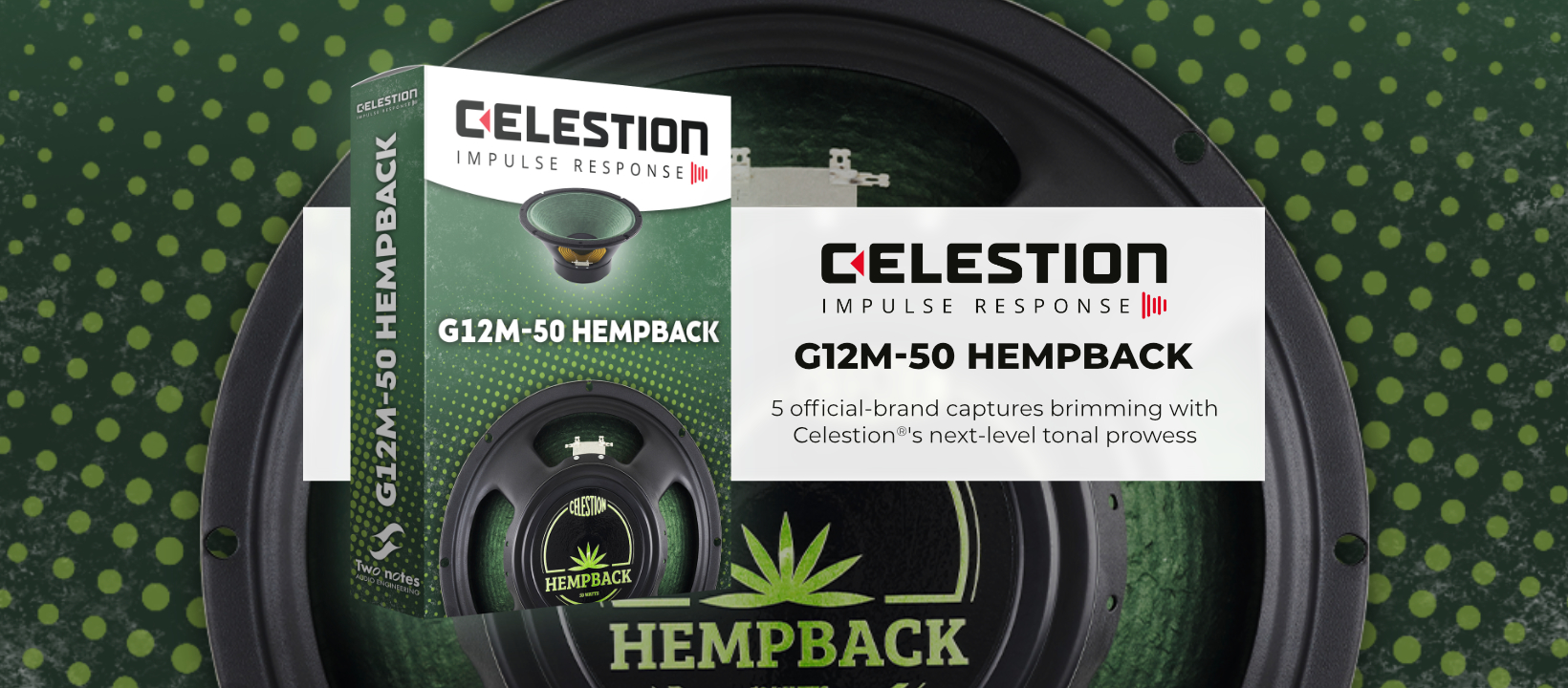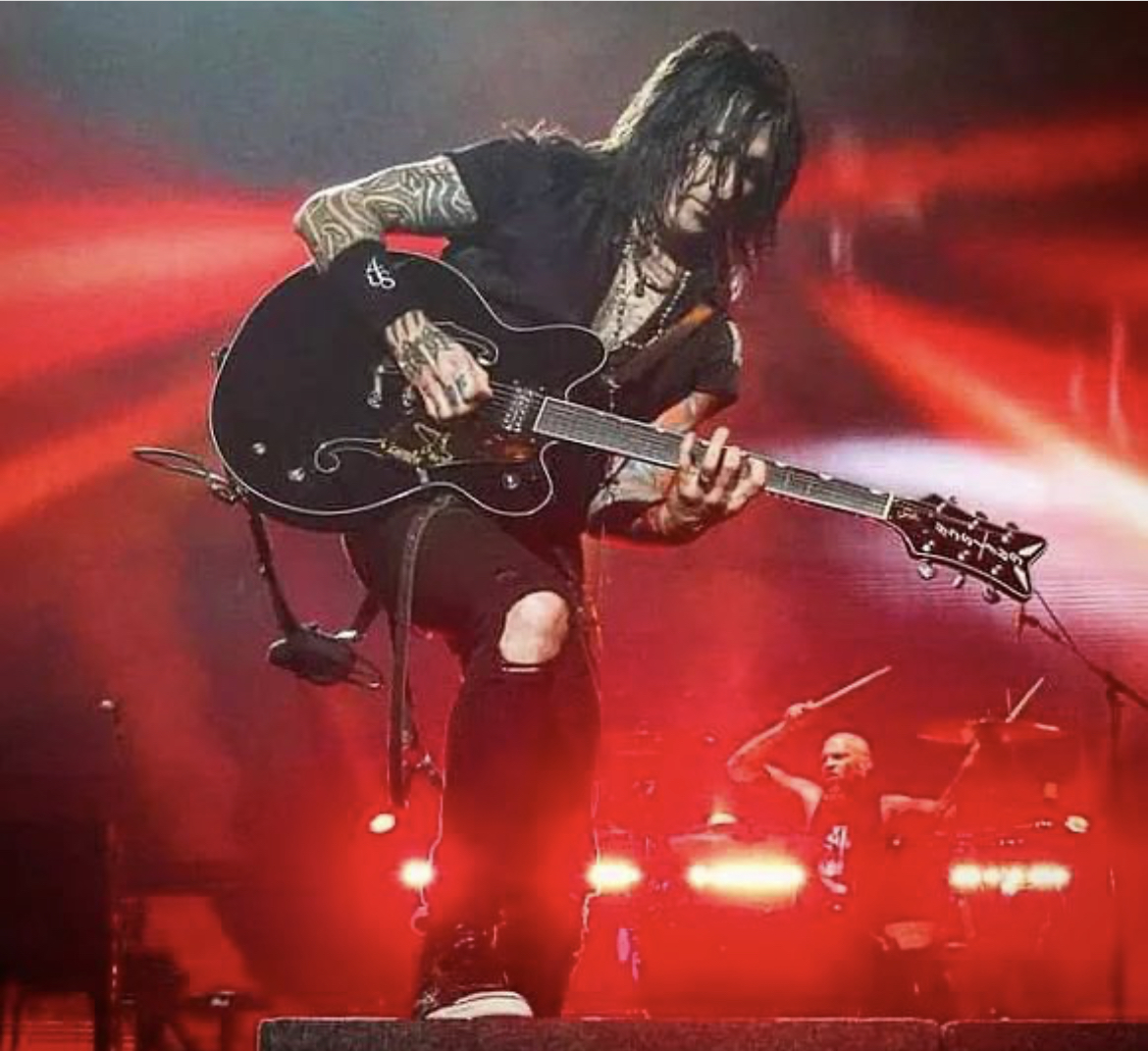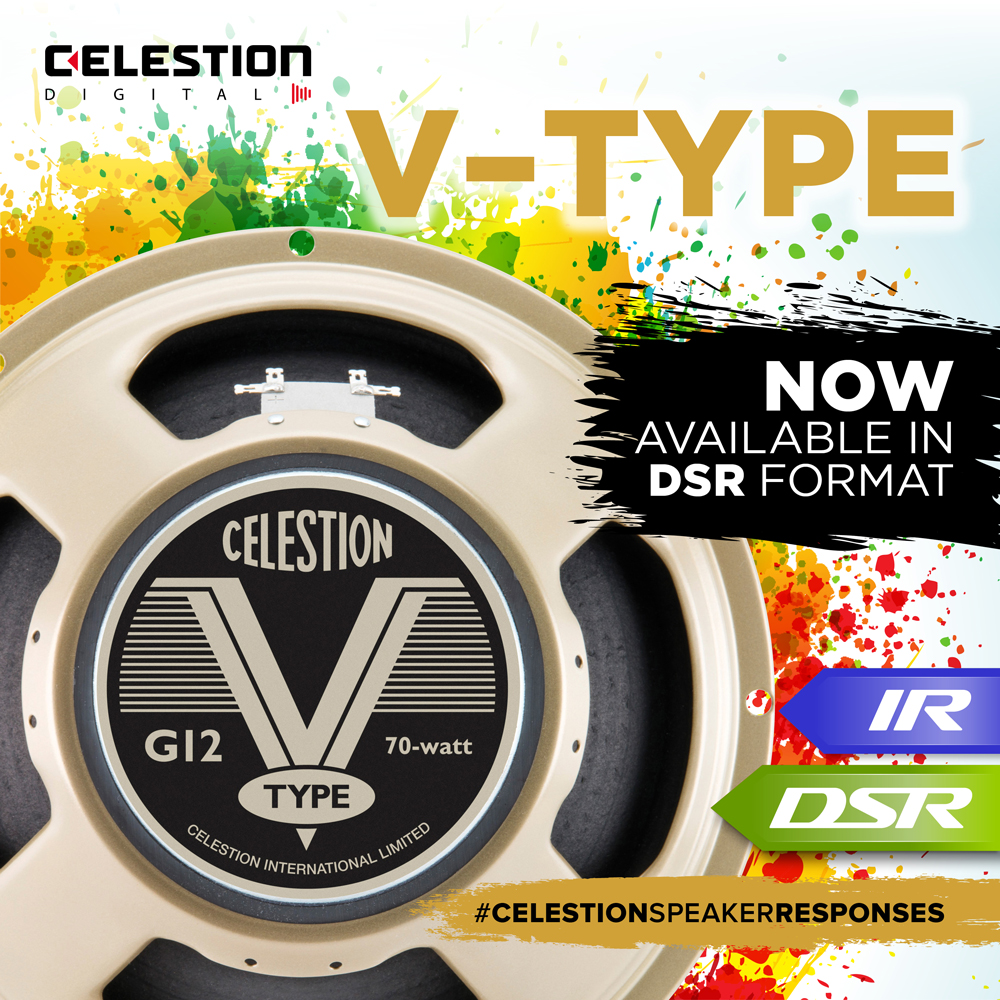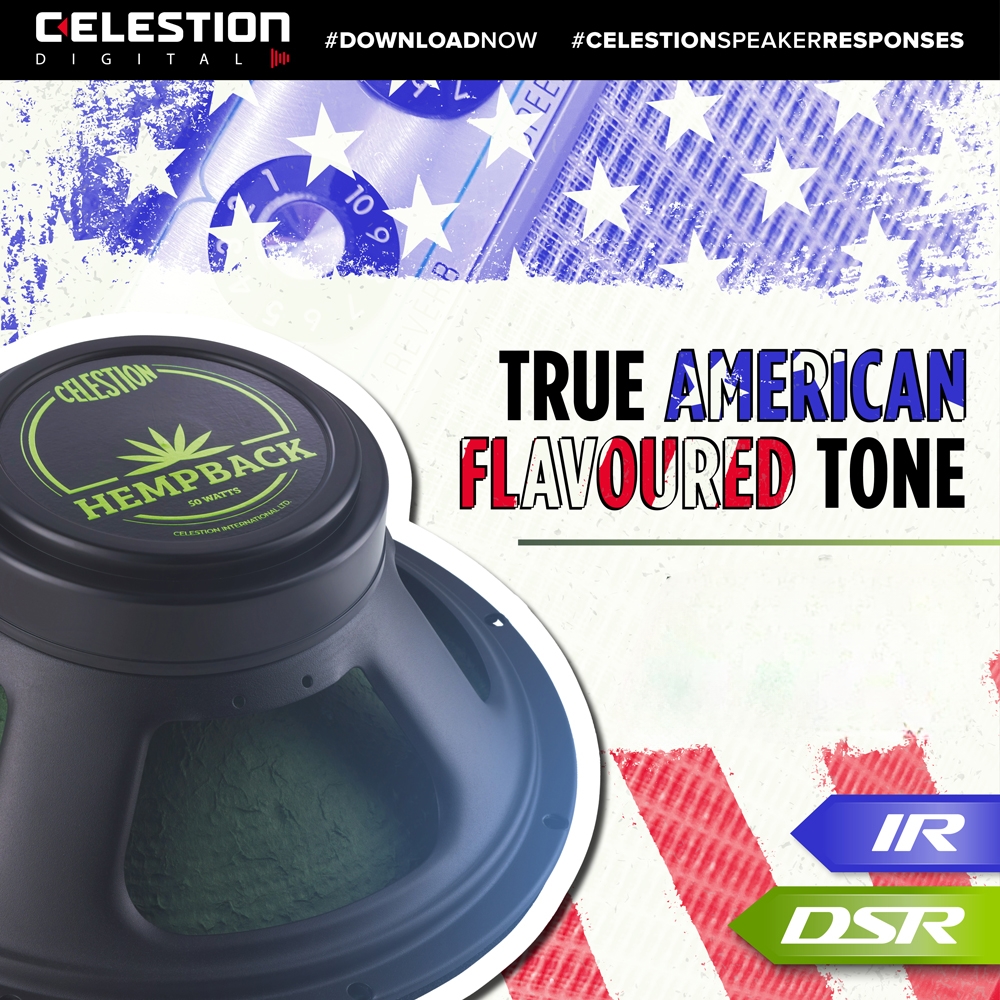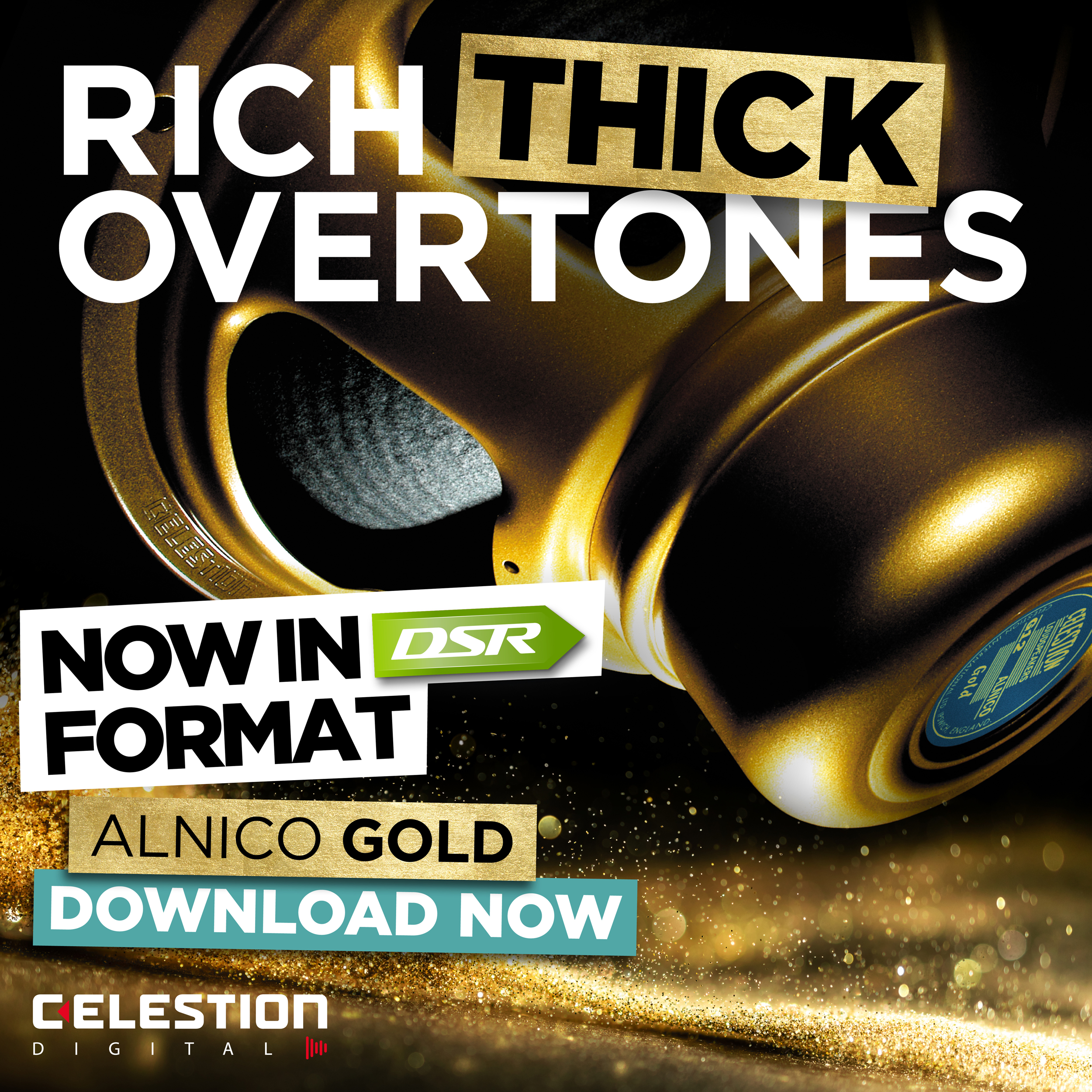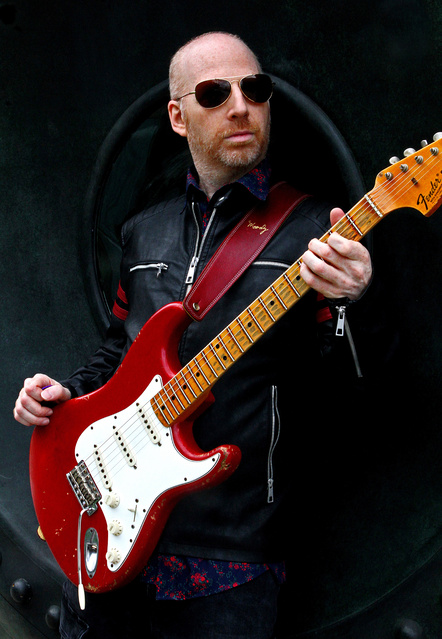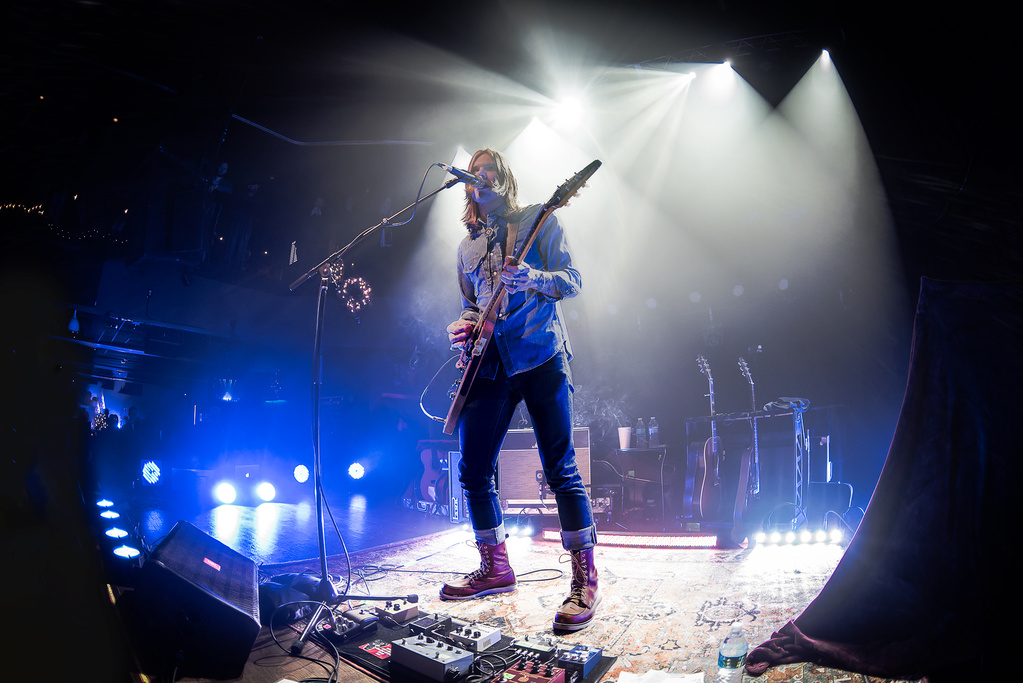
Imagine dreaming the rock ’n’ roll dream since childhood, then living it by the time you were 17 years old. Not as a solo singer who won a TV competition, and not as a member of a prefab boy (or girl) band, but as a bona fide rock outfit. It happens to almost no one, but it happened to Nick Perri. His first band Silvertide played professionally whilst its members were still in school and then on the major festival circuit immediately thereafter, and he has worked as a guitar sideman for many of his musical heroes. Now an accomplished singer-songwriter, his latest studio work, the double concept album Terra Firma, drops in June. All along his incredible journey, Celestion guitar loudspeakers have been his trusty companions, and he shared his story with us.
Start by telling us, who is Nick Perri?
I was born and raised in Philly but lived in California about 16 years. I moved there in my early 20s after my first band, Silvertide, broke up. I moved back to the Philly area in 2020 because my parents are getting older and I wanted to spend more time with them, and also let them get to know my daughter better. It’s been great.
We can see that you have a cool home studio, too.
Music is what I do day and night and I have a setup that goes with me wherever I am. What can I say, I’m obsessed! Music is something I couldn’t turn off if I tried.
What were some of your first experiences with playing music?
When I was 12 years old, my aunt who’s no longer with us, we called her the Dode — D-o-d-e. This was in the mid-’90s, and on cassette she gave me AD/DC’s Highway to Hell and Pearl Jam’s Ten. From that moment on I was obsessed, and I was soaking up stuff at lightning speed like kids are able to do.
That included all the big ’90s bands, like Nirvana and Soundgarden and Alice in Chains, but I also had a couple of mentors who were feeding me classic rock like Led Zeppelin and Pink Floyd. When I heard Pink Floyd, it was like the gods of the universe were handing me something very special. It made me feel like anything was possible.
My first record deal was at 17, so between 12 and 17, like I said I was just digesting things at a crazy speed. At 17 I left school to do music and I thought of it like joining the circus.
What was your first experience playing professionally?
It was that band I started in high school called Silvertide. We started like most bands playing coffee houses and open mics. Then we got a gig playing one night a week on South Street, which was like the Sunset Boulevard of Philly. We were kids and for lack of a better word, we were playing a more classic style of rock and roll, like ’60s and ’70s, so I suppose that gained us some attention.
We started playing more nights a week until it was like five or six, we got a manager, and then it was off to the races. This was like early 2000s, 2001, so sort of just before the decline of the record business as we knew it. We got to open for Aerosmith. There was a bidding war, we got signed by Clive Davis, and toured the world — Europe, Japan. ZZ Top, Mötely Crüe, Foo Fighters, and the Van Halen reunion tour in 2004 …I got to play with all my heroes. It was just this just wild ride. And I was using Celestion speakers the whole time.
Then at 22 years old it was over, and I was like, what am I going to do with the rest of my life? I had left school and I had no real skills outside of music. Then instead of this crazy, once-in-a-lifetime, lightning in a bottle kind of thing, I had to face the reality of trying to make a life in the music business, trying to make it a career. It’s something I’m still working on.
How did you cope with such a huge change?
I guess I sort of settled into, “Okay, what is my non-ridiculous version of this going to be? What is sustainable? What will allow me to have a family?” So that’s been the last 15 years or so.
I’ve done the sideman thing and played with various artists for whom I’m grateful for the opportunity. Perry Farrell was a big one since I grew up listening to Jane’s Addiction in the ’90s.
But I’m a songwriter at heart. I’ve written my own songs since I was very young, and all roads always lead back to original music. It’s the harder road, and even though I make way less money than I would playing someone else’s music, I just have the compulsion to create my own songs.
Were you on that first Satellite Party record with Perry Farrell and Nuno Bettencourt?
Not the studio album but I toured that record. So, Nuno did Europe on the first leg of the tour, and when they got back, I guess he had a falling out with Perry. They called me two days before they were on The Tonight Show. This was when Leno was host. It was unreal. I was 22 years old and had to learn 20 songs in two days! Then I did a year of touring with Satellite Party.
Tell us about Terra Firma.
Yes, that’s been a labor of love for three years. Sun Via, which came out in 2020, was really the debut. The first record I ever put out under my own name, and where I was frontman and singer. It was like a rebirth. Despite all odds, completely independently with very little help from anybody, it debuted in the top ten on iTunes and we sold a bunch of vinyl records and spent two and a half years touring. It was really the shot in the arm I needed to make me realize I could do this songwriter role I had always been watching from the side.
With Terra Firma, any minute I wasn’t on the road I was in the studio writing and recording it. It’s a double album, a concept album, and very personal. It’s very important to get it out into the universe for me. I’ve never worked on any one thing this long and this hard.
When you’re starting out and you go to the retail music store, you usually don’t buy a Celestion product directly. You buy a product like an amplifier that has it inside. So, what was the first time you were aware that Celestion was, in fact, Celestion? That it was doing something good for your tone.
That’s a great question. First of all, yes. When I was a teenager, I bought a MarshalI, it was some kind of modern one, and I wasn’t hip to Celestion at the time. A couple of years later, I was extremely lucky that when we signed our first record deal, we had a little money. I had a mentor, thankfully, who helped me put my money where I should. Then I bought a vintage Marshall — a 1971 Super Lead. They had a corresponding tall cab that was a 4 x 12. It had original Greenback speakers inside from what I think was their first incarnation. It was an unbelievable sound.
That was the first time I was like, there are all these things that play a part in the sound of my guitar. The speaker is the thing that’s actually pushing the sound. I don’t think people realize how big an impact it has on the tone. Like, literally night and day if you switch speakers, how the same guitar, same pickups, and same amp sounds coming at you. So that’s the first time I realized how crucial the speaker was and that I favored that British sound.
What amp do you play through now and what speakers are inside it?
I have a larger stage rig that I don’t record with. That’s a Marshall JTM45 and I also have a Park amplifier. They’re both running, believe it or not, through a 1990s cab loaded with original G12T-75 speakers, which is what would have come stock in this kind of cabinet. I’m a fan of those speakers because I can play really loud, and use a fuzz pedal on occasion, and the speakers don’t fall apart. Things don’t fall inward, know what I mean? They hold their fidelity and sound tight. Whereas a 20-watt speaker would fall apart if driven like this.
What do you use in the studio?
This is the amp I use for smaller tours like solo work and also in the studio is my number one amp in the world. It’s a Marshall 1974x, which is a combo amp. But the thing that makes all the difference is that I put a Celestion Alnico Ruby in it, which is my favorite guitar speaker in the universe right now. It’s a 35-watt speaker that’s the bigger brother of the Blue. The sound of this speaker was a total game-changer for me. So much so that I stopped using pedals mostly. The sound of my Flying V [guitar] through that amp is the best thing I’ve ever heard. I’m able to dime the amp and the Ruby has a softer, more pleasing high end than, say, most of the ceramic-magnet speakers I’ve heard. You’re going to hear it all over Terra Firma.
Where else should we listen for Celestion in your music?
Hah, everywhere! But “Feeling Good,” the lead single from Sun Via, did really well. On that, I actually ran a Marshall through a 4 x 10 tweed Fender Bassman cabinet, in which I had four ten-inch Greenbacks. That is a m*****f***** of a tone.
I’ve always been a fan of Celestion speakers. I can’t remember one instance over the last 20 years I haven’t used them for anything I’ve done. Celestion is a huge part of my musical DNA.
You lived the rock ’n’ roll dream at a very young age and are still going strong. What advice would you have for your younger self?
I would tell myself to slow down in every aspect. Smell the roses and enjoy the journey a little more. It goes by so fast, and you don’t get any do-overs.
##


